The Jews In Sicily
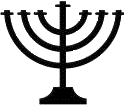
The Jews In Sicily | 
|
Fascio Di Luce Debole
| Jewish Traces In Sicily
|
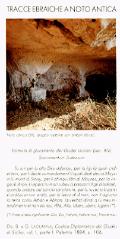 | l'ipogeo rupestre di Noto con simboli ebraici An ancient underground Burial Chamber hewn out of rock, having Hebrew symbols. |
 | l'iscrizione quadrilingue tra cui l'ebraico alla Galleria regionale di Palazzo Abatellis a Palermo An inscription in four languages including Hebrew now in the regional Gallery of Palermo in the Palazzo Abatellis |
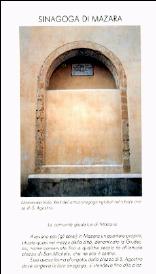 | la Sinagoga di Mazara del Vallo The Synagogue of Mazara del Vallo |
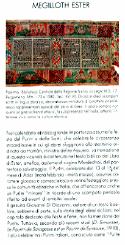 | Rotolo in pergamena diviso in 10 scomparti scritti in lingua ebraica, decorato con miniature con episodo del Libro di Ester alla Biblioteca Centrale della Regione Sicilia a Palermo A parchment roll divided into 10 sections written in Hebrew, illustrating in miniature an episode of the Book of Esther, in the Central Library of the Region in Palermo. |
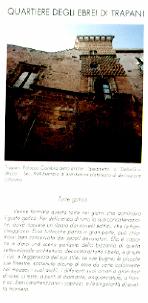 | Palazzo Ciambra nel quartiere degli ebrei a Trapani The Palazzo Ciambra in the Jewish Quarter of Trapani |
 | iscrizione antiebraica murata sulla facciata della Cattedrale a Messina An antisemitic inscription affixed to the front wall of the Cathedral of Messina |
 | via della Giudecca (poi divenuta via Cardines) e quartiere ebraico a Messina Via della Giudecca (later named Via Cardines) and the Jewish Quarter of Messina. |
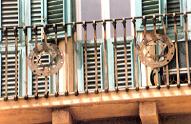 | palazzo Penso a Messina con stelle di David The Penso mansion with Stars of David on the wrought iron. |
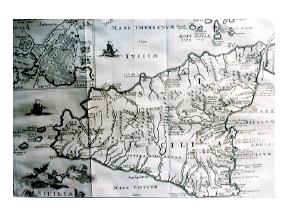 | carta della Sicilia con didascalie anche in ebraico A map of Sicily containing Hebrew captions. |
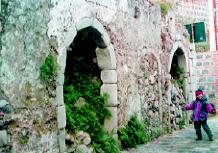 | rovine della sinagoga di Savoca (Messina) The ruins of the Savoca Synagogue in Messina. |
 | iscrizione funeraria nel Seminario arcivescovile di Messina A funeral inscription in the archepiscopal seminary of Messina. |
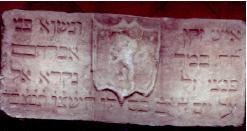 | e per finire lapide posta nella sinagoga di Messina che si trova oggi nei depositi del Museo Regionale di Messina And found in the holdings of the Regional Museum of Messina, a tombstone from the Messina Synagogue. |
 | In fine una pianta del quartiere ebraico di Messina (detto del Paraporto). Lastly, a map of the Jewish Quarter of Messina (known as the Paraporto). |
 | This shows a Hebrew inscription for G-d in the Cathedral of Monreale in a low resolution version of a photograph by Jonathan Mandell of Chicago, Illinois. The photograph was taken on October 8, 2005. Here's a better view of the inscription on Jonathan's uncropped 1.2 MB JPEG file that expands to a 7.3 MB photo. |
| The following five photos are of Via Judeca in the Centro Storico part of Caltagirone. They were taken on October 22, 2009. Via Judeca, now spelled Via Iudeca, as the letter J disappears from Sicilian, runs from the intersection of Via San Giuliano, southeastward to the intersection with Via Santo Stefano. Via Iudeca is shown on the two maps that follow. Via San Giuliano, which runs along the western side of the Duomo, leads directly into Via Iudeca. |
 click to enlarge |
The Via Judeca street sign was partially obscured by a rain downsput. A new sign with the new spelling, Via Iudeca, was affixed in the clear. |
 click to enlarge |
Standing at the intersection of Via Iudeca and Via San Giuliano, looking towards the Duomo, in the Historic Center of Caltagirone. |
 click to enlarge |
Looking southeastward on Via Iudeca, you see the church of Santa Maria dei Miracoli. This was the location of the Jewish synagogue before the Expulsion of 1492. |
 click to enlarge |
An older Via Judeca sign at the intersection with Via Santo Stefano. |
 click to enlarge |
Looking northward on Via Judeca. The Duomo is seen beyond the other end of the street. |
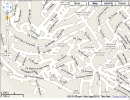 click to enlarge |
A Google map of part of the Historic Center of Caltagirone, showing the Via Iudeca area. |
 click to enlarge |
Scan of map of Caltagirone showing the Via Judeca area. The building identified with the number 2 is the Duomo and the one with the number 5 is the former Synagogue which is now the church of Santa Maria dei Miracoli. |
| Return to... Sicilian History |
| or to... The Jews in Sicily |